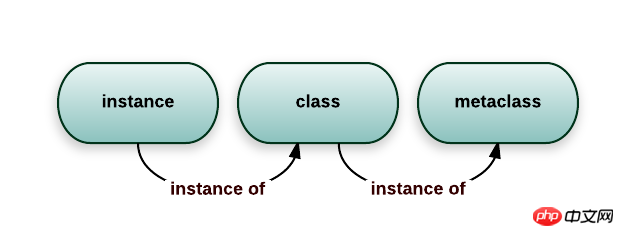
This article mainly introduces the analysis of Python metaclass instances. The main task of this article is to thoroughly explain to everyone what metaclasses are. Friends in need can refer to
Uncle Turtle invented Python, and then A bunch of concepts are integrated into this language, such as: iterators, decorators, functions, generators, classes, objects, coroutines, etc.
None of these concepts seems easy for beginners to understand, but there are more difficult concepts than this. It is the creator of the Python world. Although we rarely use it directly, we use it every day. , it is today's protagonist ------ metaclass.
My task today is to thoroughly understand what a metaclass is, let’s take a look.
To understand metaclasses, let’s start with objects.
Object (Object)
Python Everything is an object, you must have heard this sentence (you have heard it now) , a number is an object, a string is an object, a list is an object, and a dictionary is an object, for example:
>>> i = 10
>>> s = "abc"
>>> nums = [1,2,3]
>>> dicts = {"name":"zhang"}Identification
The identification is the same as a person’s ID card ID. Each object has a unique ID identification, which does not change during the entire life cycle. will change, you can think of the identifier as the address of this object in computer memory. The ID of an object can be viewed through the function id().>>> id(i) 40592592 >>> id(s) 44980584
Object value
The second of the object Attributes are values, and values are easy to understand. For example, the value of i is 10, the value of s is abc, and the value of nums is 1,2,3.Type
Another very important attribute of an object is its type. Any object has its own type, and the object is composed of its It is constructed from a type. For example, the type of i above is int type, and this object is constructed from int. The s type is a string type, the nums type is a list type, and the dicts type is a dictionary type. They are all constructed from the corresponding types. You can check the type of object through type().>>> type(i) <class 'int'> >>> type(s) <class 'str'> >>> type(nums) <class 'list'> >>> type(dicts) <class 'dict'>
Classes and (instance) objects
In addition to the integer types, string types, lists and other types that have been defined by the system, We can also create our own types, defined with the keyword class. For example:>>> class Person: # 这里的 self 指某个实例对象自己 ... def __init__(self, name): # name 是实例的属性 ... self.name = name # live 是类的属性 live = True
>>> p1 = Person("zhangsan")
>>> p1.name
'zhangsan'
>>>
>>> p2 = Person("lisi")
>>> p2.name
'lisi'>>> p1 <__main__.Person object at 0x0195AA30> >>> type(p1) <class '__main__.Person'> # 这里的__main__是模块名称
Classes are also objects (also called class objects)
We just said that everything is an object, the instance (real car) is an object, and the class (mold) is of course also an object, because it is also a real thing, When the Python interpreter executes When the keyword class is used in this instruction, a class named "Person" will be created internally. This class is also an object. We call it a class object (note the difference between instance objects). It also has an ID identification, type, There is value. For example:>>> id(Person) 26564024 >>> type(Person) <class 'type'> >>> Person <class '__main__.Person'>
>>> nums = [1,2,3] >>> type(nums) <class 'list'> >>> type(list) <class 'type'>

Creating classes using metaclasses
前面讲到过,type 有一个作用是用于检查对象的类型,其实它还有另外一个作用就是作为元类动态地创建类(对象)。
>>> Person = type("Person", (), {"live":True})
>>> Person
<class '__main__.Person'>Person 就是一个类,它等价于:
>>> class Person: ... live = True ... >>> Person <class '__main__.Person'>
用元类 type 创建类的语法是:
type(类名,基类元组(可以为空), 属性字典)
总结
以上所述是小编给大家介绍的 Python 元类实例解析,希望对大家有所帮助,如果大家有任何疑问请给我留言,小编会及时回复大家的。在此也非常感谢大家对脚本之家网站的支持!
相关推荐:
The above is the detailed content of Python metaclass instance analysis_python. For more information, please follow other related articles on the PHP Chinese website!




